


Above, two images from Nicolas Provost's Papillon d'amour, and a photo of Douglas Gordon's Between Darkness and Light (After William Blake).
Last night in class I briefly mentioned the work of artists who use existing films as the material of their work. I brought this up because I was talking about one of the ideas at play in Michael Almereyda's Hamlet: the absolute dominance of film (or more broadly, visual representation/communication media) in contemporary culture. While I want to write more about this in preparation for our discussion session next week, I thought I'd first give you a look at some innovative video art as food for thought.
You can see Nicholas Provost's beautiful Papillon d'amour on YouTube (low res, unfortunately) and read a bit about his work at the Video Data Bank. Papillon d'amour is made from footage of Akira Kurosawa's film Rashomon and I should probably say a bit about it here, too. I've mentioned Rashomon in class because of it's important status in film history and also its interesting handling of narrative structure: its nonlinearity and lack of closure. If you've never seen it, you can actually view the film online via the Internet Archive, a marvelous database of film/video/television images, most of them available in their entirety. Rashomon would fit quite well with the other films we've been looking at in this class, too, since as Stephen Prince points out in his essay for the Criterion Collection's release, "...the film has had a huge impact on modern culture. Rashomon is that rare film which has transcended its own status as film. Rashomon has entered the common parlance of everyday culture to symbolize general notions about the relativity of truth and the unreliability, the inevitable subjectivity, of memory [my emphasis]. In the legal realm, for example, lawyers and judges commonly speak of “the Rashomon effect” when first-hand witnesses of crime confront them with contradictory testimony."
I don't have any clips to show of you of Douglas Gordon's much bigger body of work, but here is a blog which has some interesting commentary on his recent show at MOMA, including 24 Hour Psycho, Between Darkness and Light (After William Blake), and Left is right and right is wrong and left is wrong and right is right, which splits Otto Preminger's Whirlpool into two panels which both mirror each other and consist of every other film frame.
The Guardian has an interesting discussion of Between Darkness and Light (After William Blake), as well as some photos and commentary on other of his work. From the article:
"[In] Darkness and Light (After William Blake)...two films run continuously, on either side of a translucent screen. On one side, Henry King's 1943 historical biopic Song of Bernadette, about Saint Bernadette, whose visions of the Virgin at Lourdes led to her sanctification and the founding of the pilgrimage site. On the other side of the screen runs The Exorcist, William Friedkin's 1973 horror movie of demonic possession. The images and sound from both movies meld and glide apart...There are inadvertent synchronicities between the two films: one is about virtue and goodness (and shot in black and white), the other unadulterated evil (shot in particularly seamy, grubby colour), but both are concerned with faith and doubt. The resulting "third image" is peculiar. The two films seem to haunt one another. Not only that, but the moments that collide so mysteriously are also always different, as the films are of different length and run continuously...heavenly visions juxtapose with evil infestations; the heavenly and the horrible keep crossing over, literally as well as figuratively."







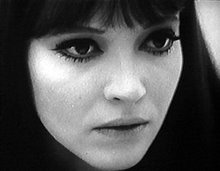







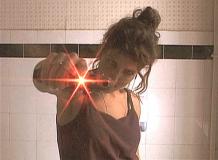



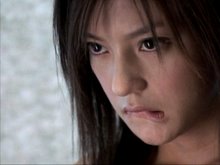




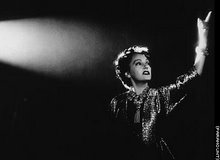



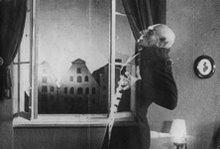


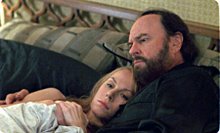
2 comments:
That was definetly intersting...kinda made me jump when the screaching sound started to happen in the short film..
I did however get the part of closure, so, maybe I am a bit confused as to what you were referring to with closure.
I also realized that about three quarters the way through the film I noticed that there was only 3 people playing in the skit. The effects of the mirror made for interesting images....maybe a cheap alternative for film makers looking for extras on the set to make up a larger body of assembled people in a scene...
You mean the issue of Rashomon and closure? Well Rashomon is a film, Papillion d'amour is an art work made out of Rashomon---so something quite different.
I loved when the music changed! It made what had seemed a very hypnotically beautiful image into something frenzied and scary!
Post a Comment